
An American artist, gravitating toward impressionism, John Tuoktman had an incredible weakness for winter landscapes. As the master himself noted, reproduction of the winter landscape is a complex transfer of a very delicate natural state, a subtle mood. As you know, the artist was a representative of the Tonalism, a direction that is based on the transfer of an infinitely free heavenly space or fog. However, this picture carries a very distant imprint of the tone, touching only the area of tonal-color solutions.
The picture depicts the favorite plot of Tuoktmena – a swift water stream, ice-bound ice, a lot of snow. Snow-white drifts smoothly pass to the horizon into whitish clouds, so it is not clear where the earth ends and the celestial surface begins. A narrow rivulet, running water, “stumbling” on the stone snow-covered rapids, “cuts” the canvas almost along the diagonal. As bright spots against the background of this snowy pastoral, thin winter trees stand out, the thin foliage of which “burns” with orange flares. Like all his “winter” paintings “ice-bound” differs unsurpassed subtlety, drawing his spectator a real winter fairy tale.
All American art critics agree that, based on French impressionism and Americanism, Tuoktmen managed to find his own style and style, taking the most interesting from these two leading directions, “breathed” into the excellent “living” landscapes.
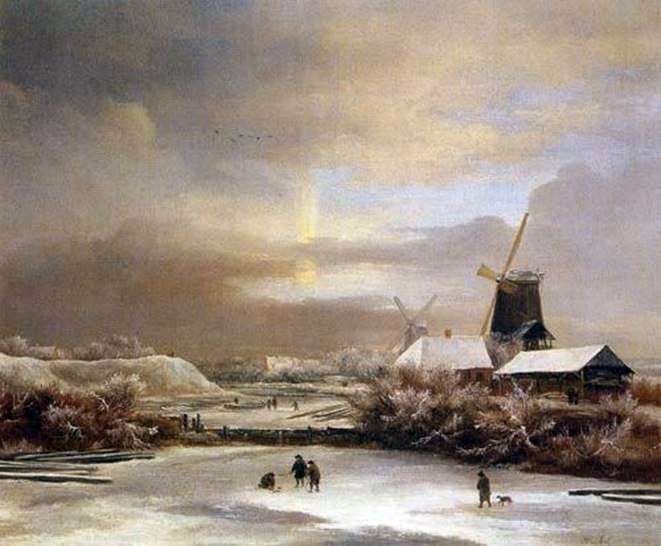 Winter Scenes by Jacob van Ruysdal
Winter Scenes by Jacob van Ruysdal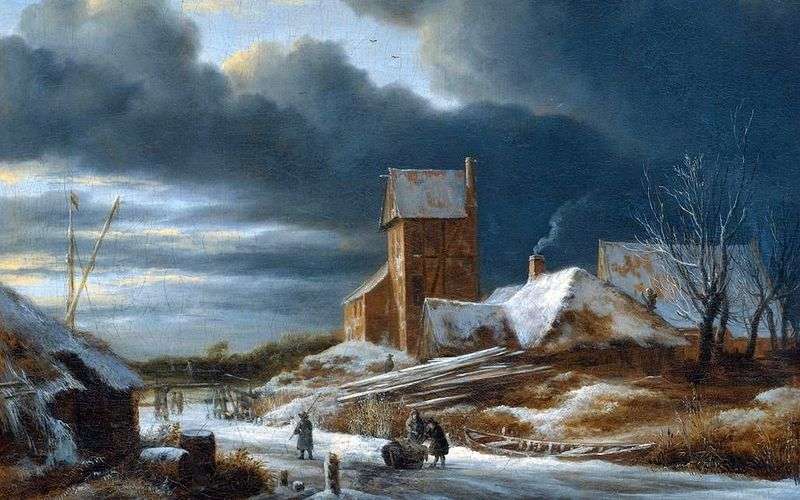 Winter landscape by Jacob van Ruysdal
Winter landscape by Jacob van Ruysdal Washington Arch in New York in the spring by Child Hassam
Washington Arch in New York in the spring by Child Hassam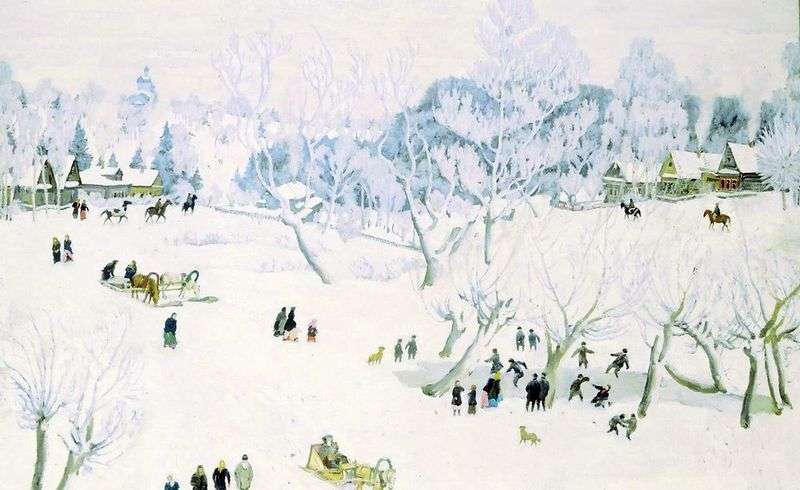 Sorceress-Winter by Konstantin Yuon
Sorceress-Winter by Konstantin Yuon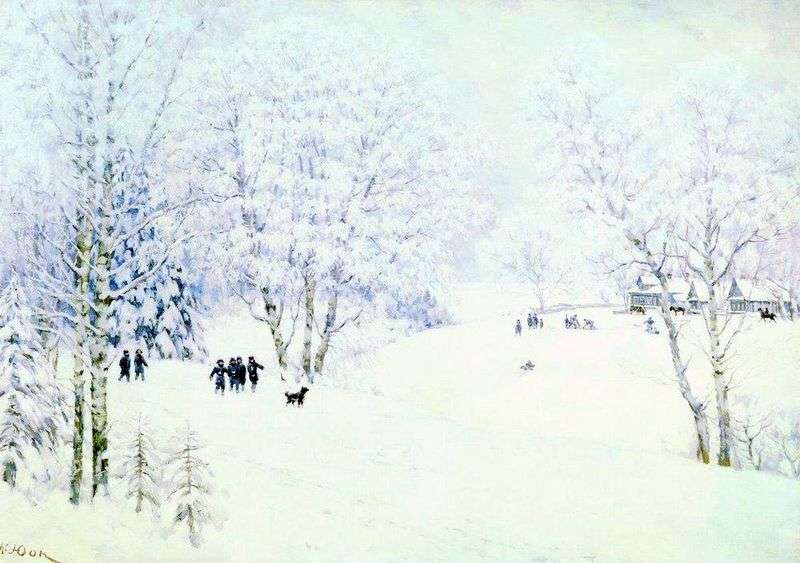 Russian Winter. Ligachevo by Konstantin Yuon
Russian Winter. Ligachevo by Konstantin Yuon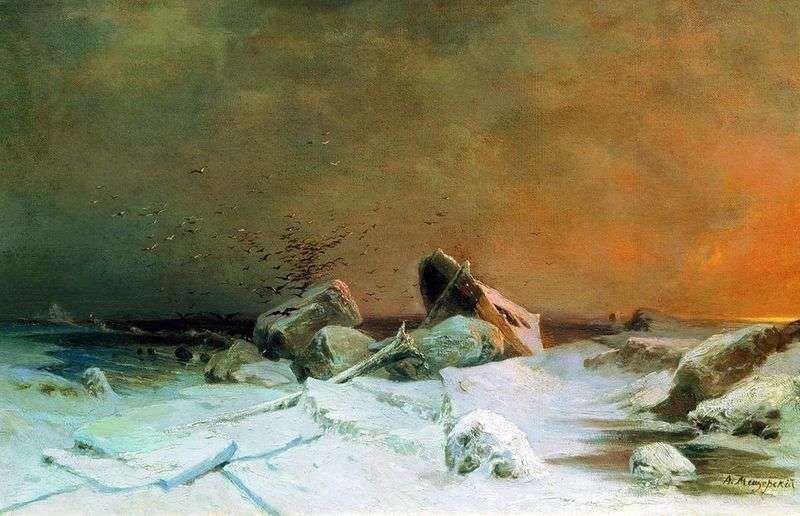 Ice drift by Arseniy Meshchersky
Ice drift by Arseniy Meshchersky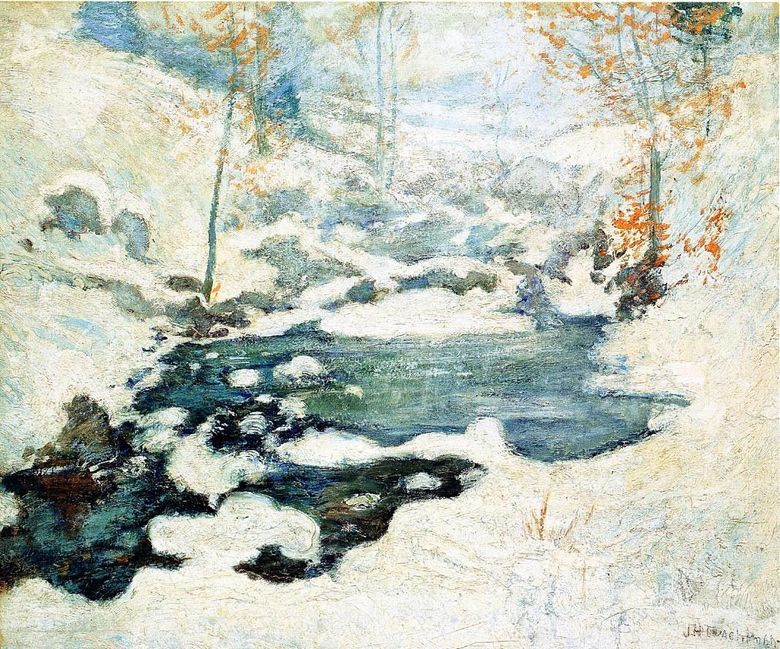 Glacé – John Tuoktman
Glacé – John Tuoktman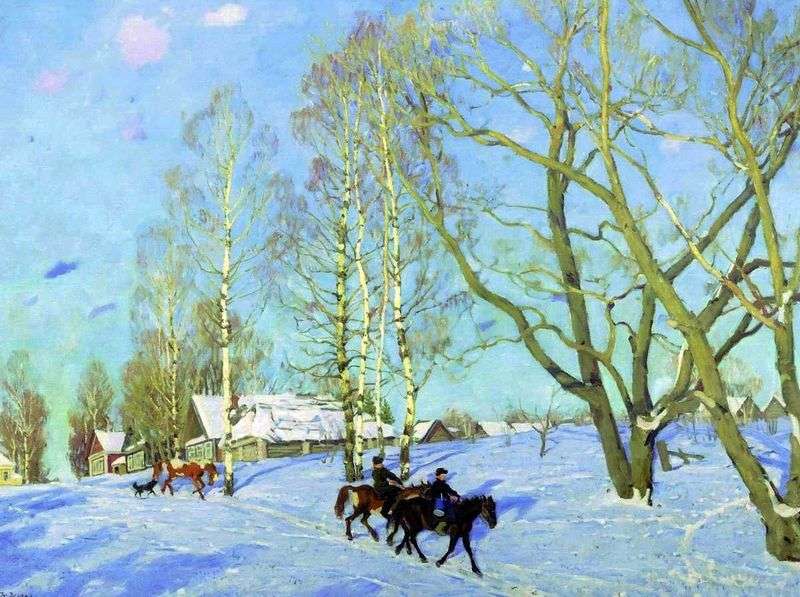 The March sun by Konstantin Yuon
The March sun by Konstantin Yuon